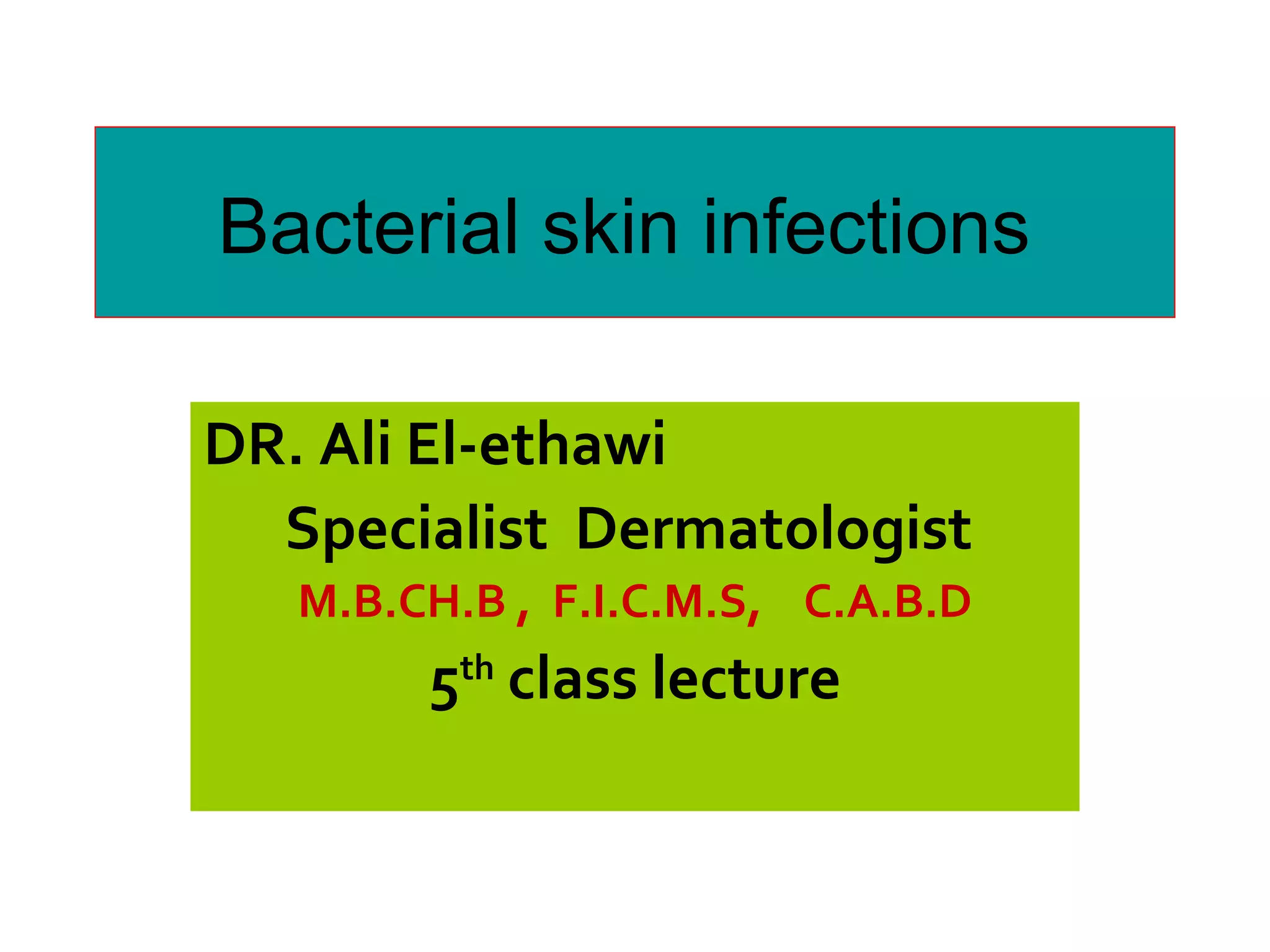Dr. Ali El-ethawi provides an overview of common bacterial skin infections. He discusses the normal skin flora and how changes can allow infections to occur. The most common bacteria that cause skin infections are Staphylococcus aureus and Streptococcus pyogenes, which can result in issues like impetigo, cellulitis, and ecthyma. Rarer causes include Pseudomonas aeruginosa. Treatment involves topical or oral antibiotics based on the specific infection as well as treating any predisposing conditions.




































